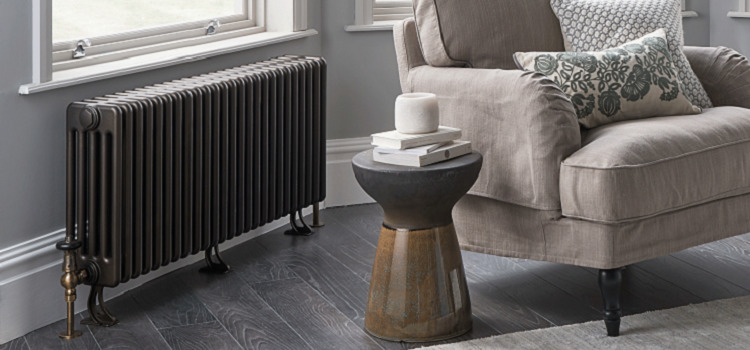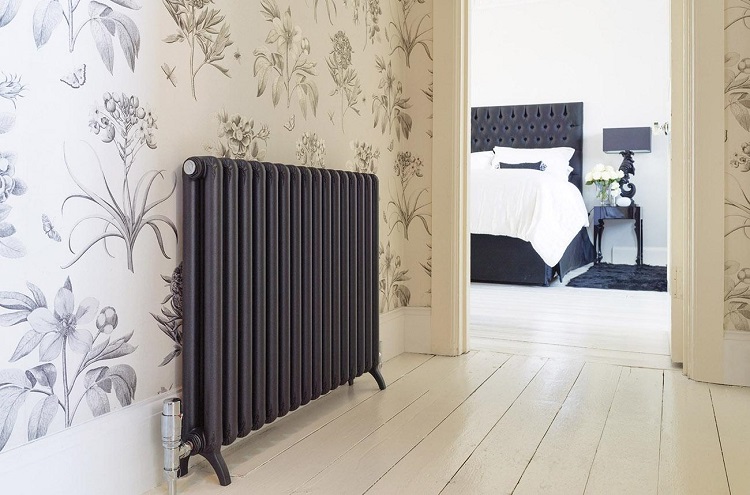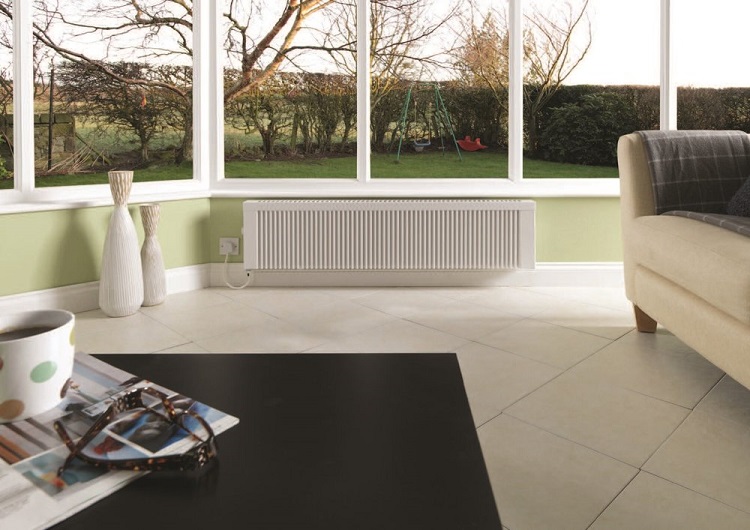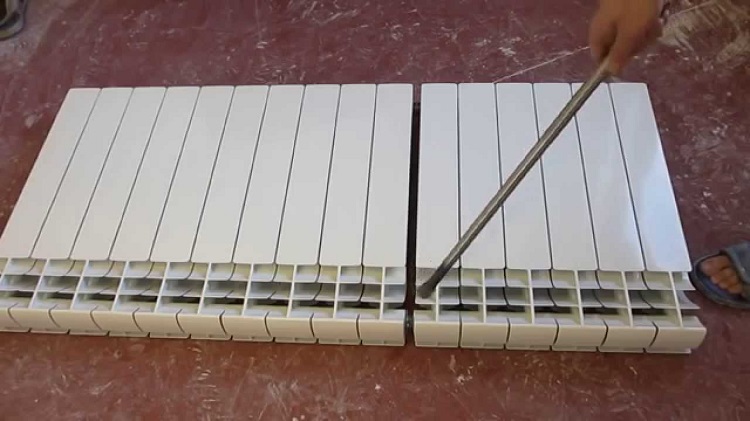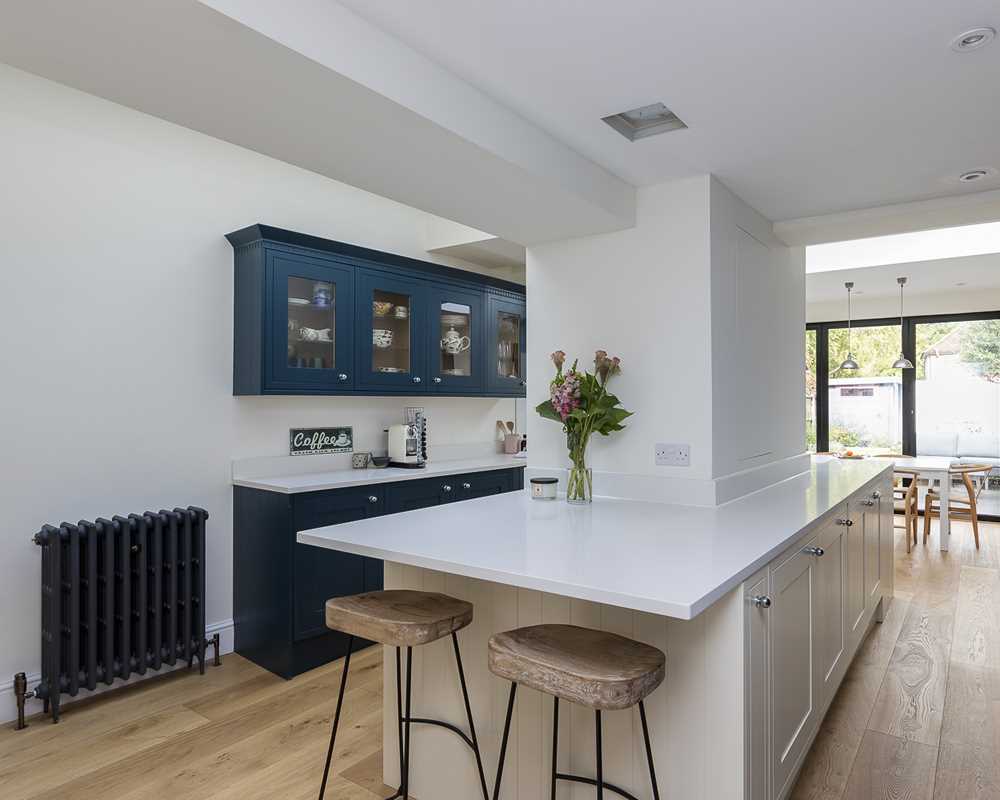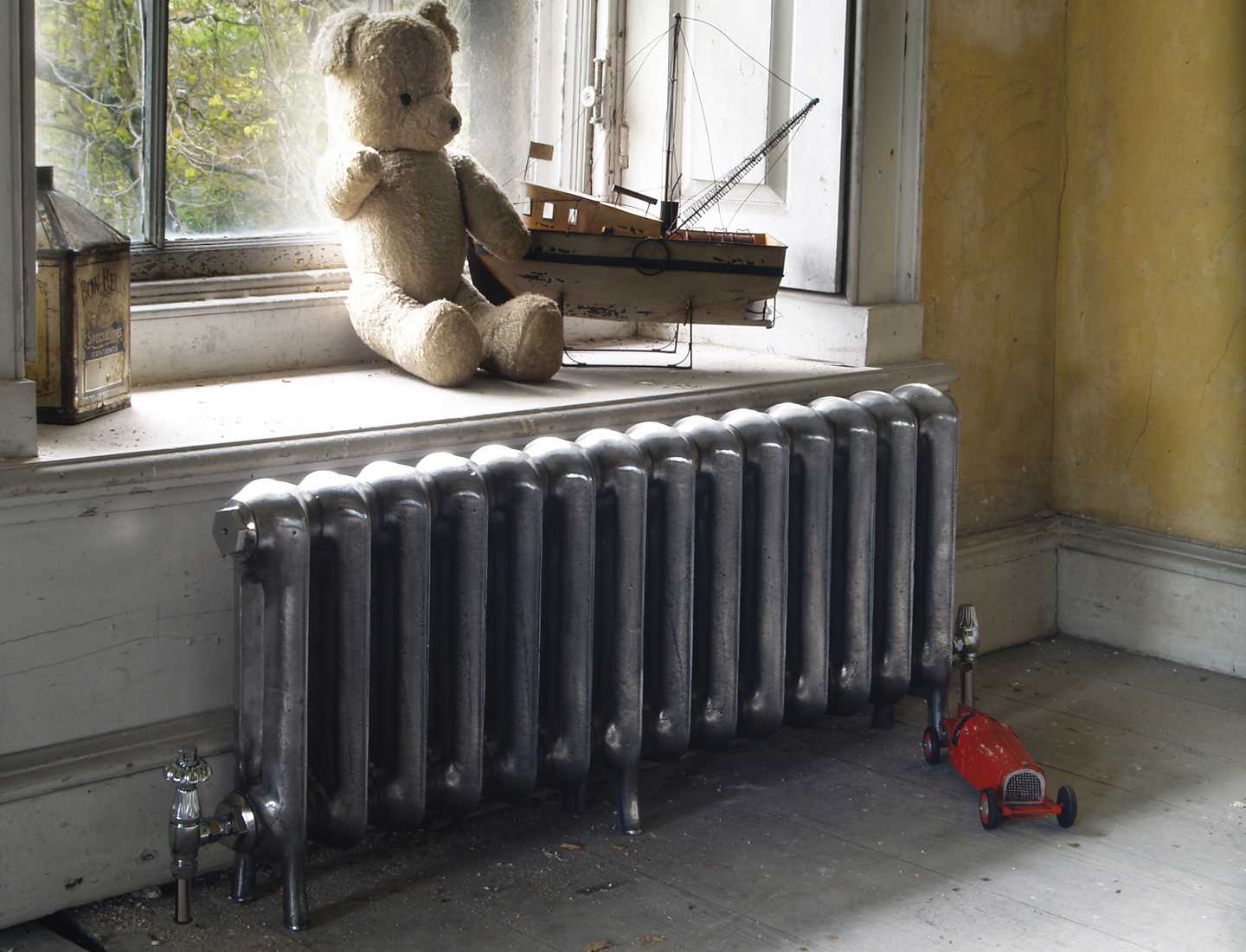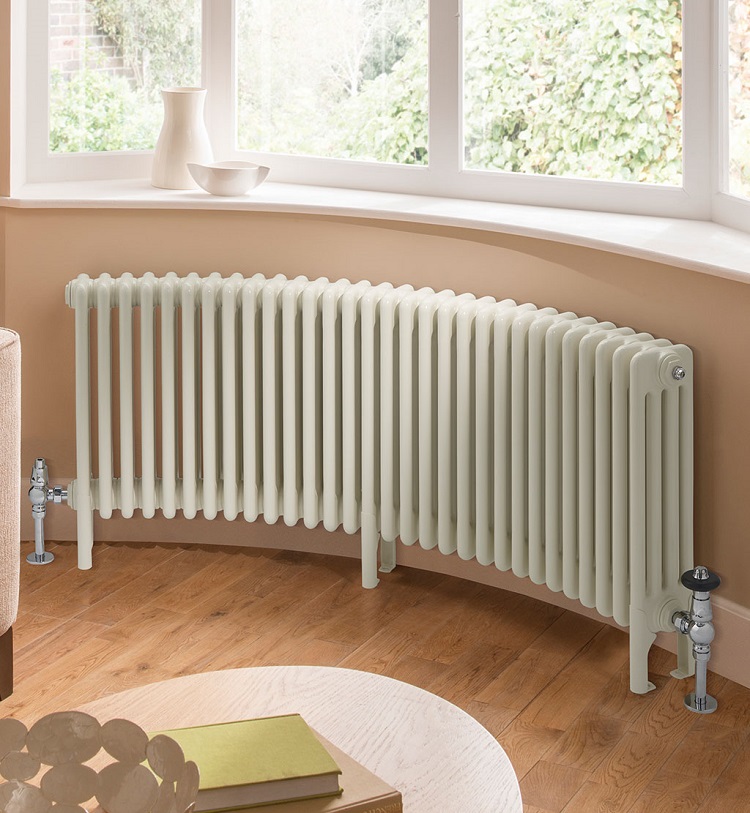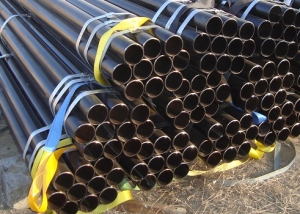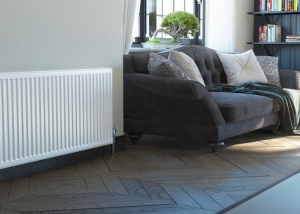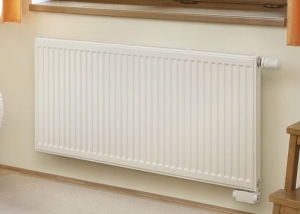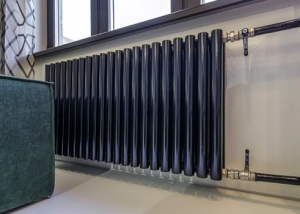Properly designed heating is one of the factors on which comfort in the winter season directly depends. But to do it right, you need to know how to calculate the number of radiator sections. This is not an easy task, as modern batteries differ in many ways. Many factors are taken into account, and if you make a mistake in the calculations, the room will not be warm enough in frosty weather, while an excessive amount of heating devices will be additional and inappropriate expenses.
Content
- 1 Briefly about the types of radiators and their power
- 2 Why you need to consider corrections and coefficients
- 3 The most affordable formulas for calculating
- 4 The most accurate calculations, taking into account the characteristic features of the heated room
- 5 Two standard calculation methods for large rooms
Briefly about the types of radiators and their power
The power heating scheme is easy to calculate for standard rooms. When replacing old "accordions", they often rely on their analogs and calculations on cast-iron heating radiators. These are approximately 10 - 12 sections for a standard room of a city high-rise building of 15-19 sq.m.
When building your own home or replacing the entire heating circuit, many questions arise about how to calculate the total number of radiators and sections in them. The modern range of heating devices is quite extensive, and most often they use the standard classification:
- sectional;
- tubular;
- panel;
- solid heaters.
Important! You can only build up sectional models, so with a lack of experience in the calculations, it is worthwhile to dwell on them.
By the type of metal, such heating devices are distinguished:
- steel (most often tubular or panel) have an elegant design, and thanks to a solid shield of the latter, it is easy to look after them from the outside. But inside they accumulate dust, have average power relative to other devices, therefore they are less in demand;
- cast iron batteries are a kind of heating classic, modern retro-stylizations are often produced with legs (floor version), they have high efficiency, so most of the traditional methods of calculating the heating battery power are focused on these models;
- aluminum heaters have excellent heat dissipation, but the metal itself is quite plastic (depressurization is possible with heavy loads), they are more suitable for the private sector and city apartments, where frequent overpressure tests are excluded;
- bimetal heating radiators (steel pipe in an aluminum casing) are considered the best option for heat transfer, design and operational characteristics.
Helpful advice! Before calculating the required number of radiator sections for one room, it is worth looking in the directories for the coefficients for these varieties of metal products to get the most accurate results.
Why you need to consider corrections and coefficients
There are various methods for calculating heating radiators, but any room or living room has its own characteristics that affect the temperature. Perhaps they are not decisive, but still indirectly make their own adjustments. These factors:
- the number of window and external doorways through which the flow of cold air masses is carried out;
- total footage of a house or apartment and heated premises;
- number of rooms, respectively, interior doors (free passages);
- layout of the building and the degree of insulation (external and internal);
- number of storeys (the last level in front of the attic and the first above the basement are the coldest);
- room height (with high ceilings there will be more cubic meters of heated air);
- materials of walls and window frames (the warmest is wood);
- one-pipe or two-pipe heating circuit;
- the degree of heating of the coolant in the system;
- configuration of batteries, their quantity and heat output;
- a room inside the house or a corner option (it is always colder);
- side of the world (the south and southwest are much warmer than the northern and eastern rooms, due to the natural heating of the walls by sunlight in the daytime);
- climatic conditions of the region and the duration of the heating season
Obviously, one cannot talk about serious calculations without taking these factors into account. All the “negative factors" add up to a cold room, and the positive aspects make it much warmer, which reduces the cost of heating in the winter.
Attention! Basic or determining values for calculating the number of sections of radiators - footage and volume of the room.
When calculating the standard hall or bedroom in a city apartment, the quadrature is taken into account. In non-standard rooms, especially with high ceilings, it is more convenient to calculate the volume (cubic meters of air) of the rooms.
The most affordable formulas for calculating
Calculations are needed when replacing old rusty, clogged batteries when repairing or replacing all heating equipment. They do not require special engineering knowledge and sophisticated measuring instruments. It is enough to know the specific thermal power of one section, which is indicated in the technical specifications for the model.
The footage of the living room can be viewed in the documents for the apartment or calculated independently - measure the length and width with a tape measure and multiply these values. For example, width - 3 m, length - 5.5 m, as a result:
3 x 5.5 = 16.5 (m2)
There are proven methods of calculation for years, but you need to start from conventional units. For a comfortable stay with heating, 100 W / 1sq.m is enough. Accordingly, the area of the heated room is multiplied by 100.
Q = S × 100.
Here:
- Q is the heat transfer of the battery;
- S is the area of the room.
For radiators of a one-piece design, the total power, which is indicated in the technical description for the model, must be taken into account.
When calculating the number of radiators of heating devices that are planned to be increased, they use the formula:
N = Q / Q (s)
Here:
- N is the required number of sections;
- Q (s) - specific power of 1 section (indicated in the model data sheet).
In addition, reference data and coefficients of normative tables are used. They are convenient for calculating heating batteries in rooms of different sizes with varying power indicators of 1 section.
Important! Tabular data can only be correlated with the standard rooms of urban apartments, with a ceiling height within 2.7 - 3 m.
With significant deviations in the ratio of the height of the walls and the format of the room, it is more expedient to carry out calculations according to the air volume of the heated room.
To calculate the volume of a room, an average coefficient of 40 W of heat transfer per 1 cubic meter of a panel house and 34 W of a brick is practiced.
Q = S × h × 40 (34)
Here h is the height of the walls from floor to ceiling (excluding decor), other calculations of the number of sections of heating radiators are carried out with the same units.
It is interesting! Few would come up with the idea of making allowances for heating objects inside. But it is much easier to heat a room with a minimal amount of furniture with fabric upholstery than a room with a lot of metal.
The most accurate calculations, taking into account the characteristic features of the heated room
As you know, the greatest heat loss is felt in the northern rooms, the walls of which are not heated by direct sunlight. A room with windows to the north and northeast also does not have time to warm up. South-west and south - this is usually the warmest room in the house, especially with hermetic windows and quality insulation. True, problems arise in the summer, especially in the southern regions, when it is very hot without air conditioning. But you can save on heating radiators.
The calculations are based on the same room area and 100 watts of energy per m² for heating. Other factors are added to the above formula:
Q = S × 100 × A × B × C × D × E × F × G × H × I × J
Latin letters from A to J indicate various coefficients that reflect the characteristics characteristic of the room:
- A is the number of external walls (the larger the colder, where A will be 1.2 if it is a corner room with 2 external walls);
- B - the degree of heating with solar heat outside (B1 - south or B1,1 - north and east);
- C - wall insulation (medium degree - 1, a house without external insulation - 1.25, sound insulation - 0.85);
- D - climatic factor (calculated according to the coldest decade of winter, but even without this, you can safely add to 1 another 0.25 in the northern regions or subtract 0.25 for apartments in the Krasnodar Territory);
- F - correction for the type of room (above the basement or under the attic of a room in the apartment it is colder, therefore the middle floor is a conventional unit, then an adjustment is made);
- G - coefficient on the degree of insulation of windows (two-chamber new double-glazed windows are warmer than old, dry frames);
- H - the area of the glazing of the room (number of windows);
- I - connection diagram of the heating battery (supply and return);
- J is the total number of sections.
Based on all these factors, adjustments are made to standard calculations on the heating load of a private house or apartment. For example, in a corner room under a cold attic, facing the north, where the old frames have gaps, it will take 3-4 sections more than in the standard version. In the same way, the number of heating radiators in a private house is calculated.
In practice, most often the number of riser sections on all floors in an apartment building is the same, regardless of the side of the world and other parameters. Since Soviet times, average standards have been in force, according to which in all the “halls” there was 1 cast-iron heating radiator for 12 sections, in the bedroom - 8-10.
Two standard calculation methods for large rooms
In the reference and educational literature, you can find various ways of computing that engineers use. Today they are guided by more complex methods, most often these are special calculation calculators and computer programs. They are entered coefficients, which are recorded in the "Building Rules and Regulations."
Specialists also use other formulas for calculating the number of sections, type I = S * 100 / P (P - Thermal return of 1 section, indicated in the product data sheet). Tentatively:
- bimetal radiator P = 185 W;
- cast iron P = 145 W;
- calculation of steel tubular heating radiators P = 180 W;
- aluminum radiators P = 190 W.
Important! The results are rounded to the nearest integer in the direction of addition.
Non-standard buildings also have to be heated. If this is a private house with facade glazing or a hall for commercial purposes, it can be additionally equipped with thermal curtains and mobile and non-standard heating devices. Today, a wide range of models of various types is presented in the catalogs of thermal equipment:
- embedded;
- wall mounted;
- outdoor;
- baseboards;
- in-floor;
- combined type.
Spacious rooms of a large area require other calculations - the total consumption of kilocalories, divided by the total number of heating appliances. Calculations are made in two ways - by area (they have already been considered) and by the volume of the room. Corrections are made when there are large departures according to SNiP standards for the height of the ceiling, which largely determines the amount of heated air in the room. After calculating the total demand for the amount of heat, then you need to calculate the radiators and the number of sections.
Recall that in the norms of SNIP per square meter of living space of a panel house, 41 W of power is required. We multiply the indicators by the height of the ceiling, obtaining the total volume. For insulated apartments with double-glazed windows, less heat is needed - 34-34 W / cubic meter. The indicator is divided by the heat transfer of one section, their total number is obtained.
To summarize, it is easy to understand that there are several methods for calculating the number of radiators in a house. Someone needs approximate or approximate figures, others turn to specialized firms to make their adjustment or to perform the most accurate calculation. We can not ignore that there are additional sources of heat - included electrical appliances, fireplaces or other factors. To simplify the calculations, all the coefficients can be entered into a special computer program and get an answer on how many sections a battery is needed for a particular room.
